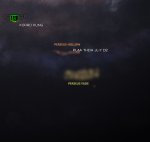Hi Erimus, keep up the good work!!!!
In the Perseus Arm of Map 02, the outer limit of the arm has some peculiar characteristics. There's a sort of line after wich star density drop drastically, but for few hundred ly it's still navigable. After that there's a chunk of void and rimward you can spot outer clouds of stars that are unreacheble for the moment.
I would call the outer limit of the perseus arm in map 02 the PERSEUS FADE, that name wouldn't conflict with names already given near the formidine rift, and does not indicate a border since there's other stuff outward.
5000ly ahead of me in the perseus fade there's the Skulls and Crossbones nebula, lol!!! I'm sure it's already explored, but i'm going there to see if there's the usual open cluster nearby. That would be 15000 from Sol, so it wouldn't clutter anything.
Edit, another show off of might photoshop ability
In the Perseus Arm of Map 02, the outer limit of the arm has some peculiar characteristics. There's a sort of line after wich star density drop drastically, but for few hundred ly it's still navigable. After that there's a chunk of void and rimward you can spot outer clouds of stars that are unreacheble for the moment.
I would call the outer limit of the perseus arm in map 02 the PERSEUS FADE, that name wouldn't conflict with names already given near the formidine rift, and does not indicate a border since there's other stuff outward.
5000ly ahead of me in the perseus fade there's the Skulls and Crossbones nebula, lol!!! I'm sure it's already explored, but i'm going there to see if there's the usual open cluster nearby. That would be 15000 from Sol, so it wouldn't clutter anything.
Edit, another show off of might photoshop ability
Last edited:





